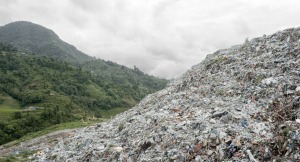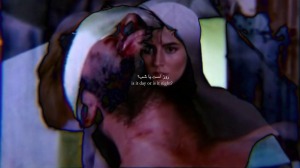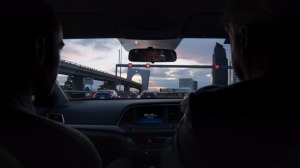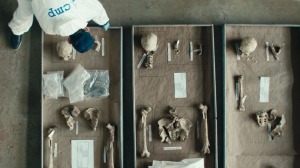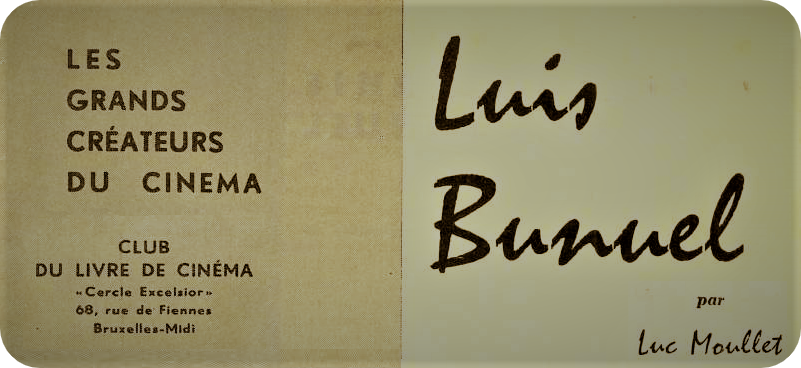Each passing year seems objectively, measurably worse than the one before, at least on a world-historical level, unveiling new lows for evil, stupidity, hypocrisy and tyranny across the globe. I’ve done nothing to change any of it, but I’m glad that, unlike me, there are people who aren’t desensitized, wilfully blind or paralyzed by analysis fighting the good fight. More power to them.
The blog hasn’t been terribly active this year. In February, I started a curatorial section on the site to showcase work from up-and-coming filmmakers, but I haven’t been able to keep it up at a rate I would like. I hope I can resume the section in 2024, even if at irregular intervals.
The primary reason for the inactivity is that I made my first foray into festival programming this year. I was on the South Asia selection committee for the Jio MAMI Mumbai Film Festival (October-November 2023) as well as the upcoming Berlin Critics Week (February 2024). Both assignments meant six months of intense, non-stop film viewing. A revelation from my time on the MAMI committee is that South Asian cinema is absolutely exploding, with crazy, ambitious works emanating from unlikely corners of the subcontinent, made by passionate individuals with little institutional or industry connections, with private resources unrelated to traditional channels of funding. It was truly an eye-opening discovery. Exciting times ahead for South Asian cinema.
For the first few months, however, I had a voluntary, almost systematic immersion into the history of avant-garde film, especially works from North America. I watched over 700 titles, long and short, canonical and lesser-known. I complemented this with reading books on the subject: Sheldon Renan, Amos Vogel, P. Adams Sitney, A.L. Rees, Stephen Dwoskin, William C. Wees, Jonathan Rosenbaum. But the single most instructive source was Scott MacDonald’s A Critical Cinema (1988-2005), five volumes of magnificently detailed interviews with avant-garde filmmakers from across generations and geographies. These exhilarating, demanding months of watching and reading truly felt like a substantial phase of my cinephile education.
It was also the year I published by second book, Moving Images, Still Lives, a lavishly illustrated monograph on Amit Dutta’s film Nainsukh (2010), published by Artibus Asiae of the Museum Rietberg Zurich. (Readers in India may consider buying a copy off Amazon, where a very, very limited number is on sale.) This book was an opportunity for me to undertake a different kind of writing — less spontaneous but more scholarly, with arguments propelled more by citations than passion. Also, until now, my references in visual arts were almost entirely European and American. Writing on Nainsukh meant researching into Pahari miniature painting and the world it issues from — an exposure I’m really grateful to have gotten.
I had no greater experience this year than watching Lijo Jose Pellissery’s Nanpakal Nerathu Mayakkam (2022), a work I would without hesitation count among the ten or so finest films ever made in India. Heck, had I seen it a few months earlier, it would’ve made it to my ballot for Sight & Sound’s all-time poll. With age, I encounter fewer and fewer films capable of shaking me up the way Pellissery’s masterpiece has. It is one of the great spiritual works of the cinema.
I didn’t see as many commercial releases as I would’ve liked, and the ones I did weren’t too inspiring. I’ve consistently had problems with Martin Scorsese’s films set in cultures foreign to him, and despite the thrilling opening hour, Killers of the Flower Moon felt crippled by the same respectful distance that hamper Kundun (1997) and Silence (2016). I found Oppenheimer and Barbie equally tedious, both movies arriving with their own halo. Among Indian releases, I found things to like in several works, such as Thankam, Maaveeran, Kaadhal: The Core, Chithha, Jigarthanda DoubleX, Animal, Viduthalai Part 1 and Haddi, but few were convincing in their entirety. So the list below is entirely composed of titles I saw at festivals or as part of my programming work. They all had their world premieres in 2023 at the festivals mentioned. Needless to say, this is a somewhat arbitrary list, and I can count about seventy other films that could be here instead. But I’ll spare you the hand-wringing. Happy new year.
1. Kayo Kayo Colour? (Shahrukhkhan Chavada, India)
 Rare are Indian films centred on marked Muslim characters, and rarer are those that don’t employ these characters primarily as objects of violence and social injustice. In Shahrukhkhan Chavada’s tender, trailblazing Kayo Kayo Colour?, Muslim bodies exist in an existential autonomy, untouched by dramatic aggression and capable of accessing a whole range of human experience. Chavada’s film depicts the everyday life of an extended working-class family in a Muslim quarter in the outskirts of Ahmedabad on a historic day. We see a woman waking up early to do household chores, her husband trying to procure funds to buy an autorickshaw, their children playing gender-segregated games. Public spaces come alive with shrieking middle-schoolers, a mother folds clothes with a daughter who has made it out of the ghetto, a girl sleeps over at her grandparents’ place—routines that become electrifying expressions of communal life. With striking passages of dead time and non-narrative digressions, the film creates space for its characters to breathe freely, to simply be. This is a work that opens up a new way of looking at life in India. In its wonderous gaze at the world, in its incredible generosity, in its profound humanity, there’s little I’ve seen of late that comes close. [World Premiere: International Film Festival Rotterdam]
Rare are Indian films centred on marked Muslim characters, and rarer are those that don’t employ these characters primarily as objects of violence and social injustice. In Shahrukhkhan Chavada’s tender, trailblazing Kayo Kayo Colour?, Muslim bodies exist in an existential autonomy, untouched by dramatic aggression and capable of accessing a whole range of human experience. Chavada’s film depicts the everyday life of an extended working-class family in a Muslim quarter in the outskirts of Ahmedabad on a historic day. We see a woman waking up early to do household chores, her husband trying to procure funds to buy an autorickshaw, their children playing gender-segregated games. Public spaces come alive with shrieking middle-schoolers, a mother folds clothes with a daughter who has made it out of the ghetto, a girl sleeps over at her grandparents’ place—routines that become electrifying expressions of communal life. With striking passages of dead time and non-narrative digressions, the film creates space for its characters to breathe freely, to simply be. This is a work that opens up a new way of looking at life in India. In its wonderous gaze at the world, in its incredible generosity, in its profound humanity, there’s little I’ve seen of late that comes close. [World Premiere: International Film Festival Rotterdam]
2. Mr. Junjun (Niu Niu, China)
 In a masterpiece the world is sleeping on, Niu Niu forges a simmering, Dardennes-style character study of a middle-aged taxi driver on the brink of explosion. A fifty-year-old single man responsible for a recalcitrant, semi-paralyzed father, Mr. Junjun must recover his debts to get out of a deep financial hole, but every effort he makes in this direction pushes him further towards the point of no return. The cruel pleasure the film offers is in prolonging Junjun’s moment of rupture through a series of secondary errands that he must run order just to stay afloat: the picture of life passing by even before you can get a hold on it. And yet, this is no mean neorealist melodrama. We have very little access to the inner universe of the bespectacled Junjun, who is a pure man of action, filmed from behind, moving purposefully through the world if only in order to stay where he is. You sense that this man will break down any minute, yet there is tremendous tenderness and grace in him — and in the film, for him. Prepare to be knocked down by the most sublime ending of the year. [WP: Pingyao International Film Festival]
In a masterpiece the world is sleeping on, Niu Niu forges a simmering, Dardennes-style character study of a middle-aged taxi driver on the brink of explosion. A fifty-year-old single man responsible for a recalcitrant, semi-paralyzed father, Mr. Junjun must recover his debts to get out of a deep financial hole, but every effort he makes in this direction pushes him further towards the point of no return. The cruel pleasure the film offers is in prolonging Junjun’s moment of rupture through a series of secondary errands that he must run order just to stay afloat: the picture of life passing by even before you can get a hold on it. And yet, this is no mean neorealist melodrama. We have very little access to the inner universe of the bespectacled Junjun, who is a pure man of action, filmed from behind, moving purposefully through the world if only in order to stay where he is. You sense that this man will break down any minute, yet there is tremendous tenderness and grace in him — and in the film, for him. Prepare to be knocked down by the most sublime ending of the year. [WP: Pingyao International Film Festival]
3. Slow Shift (Shambhavi Kaul, India-USA)
 The work of Shambhavi Kaul, which has a knack for transforming real landscapes into otherworldly vistas, finds its perfect subject in the medieval city of Hampi in Southern India. The seat of the Vijayanagara Empire in the fourteenth century, Hampi is today a World Heritage Site attracting tourists from across the globe. In Slow Shift, Kaul crafts a spectral, non-narrative travelogue of the site that unearths its historical, mythical, geological, ecological and cultural layers. Weaving together images of stately rock-cut monuments, precariously posed stone clusters and an army of langurs taking over the depopulated site, the film forges a post-human space eerily resonant with the barren cityscapes that became common during the pandemic years. In a manner reminiscent of Richard Serra’s monumental steel sculptures, Slow Shift strikes a precarious balance between majestic stasis and imminent collapse. By combining moments of instantaneous change in the landscape with more long-term transformations as evidenced by Hampi’s weatherworn structures, the film evokes the different time scales simultaneously at work in nature, reminding us that even the mightiest empire will turn to rubble one day. It’s truly a planet of the apes, and we’re only squatters. [WP: Toronto International Film Festival]
The work of Shambhavi Kaul, which has a knack for transforming real landscapes into otherworldly vistas, finds its perfect subject in the medieval city of Hampi in Southern India. The seat of the Vijayanagara Empire in the fourteenth century, Hampi is today a World Heritage Site attracting tourists from across the globe. In Slow Shift, Kaul crafts a spectral, non-narrative travelogue of the site that unearths its historical, mythical, geological, ecological and cultural layers. Weaving together images of stately rock-cut monuments, precariously posed stone clusters and an army of langurs taking over the depopulated site, the film forges a post-human space eerily resonant with the barren cityscapes that became common during the pandemic years. In a manner reminiscent of Richard Serra’s monumental steel sculptures, Slow Shift strikes a precarious balance between majestic stasis and imminent collapse. By combining moments of instantaneous change in the landscape with more long-term transformations as evidenced by Hampi’s weatherworn structures, the film evokes the different time scales simultaneously at work in nature, reminding us that even the mightiest empire will turn to rubble one day. It’s truly a planet of the apes, and we’re only squatters. [WP: Toronto International Film Festival]
4. Fauna (Pau Faus, Spain)
 Aging shepherd Valeriano lives with his herd on the outskirts of Barcelona. With his children away and with a debilitating orthopaedic problem that requires him to hang his boots, he struggles to keep his profession alive. He supplies sheep to a high-tech laboratory next door, which runs tests on them as part of its research to develop a vaccine for the Covid19 virus. Except for animals brought in through carefully controlled doorways, the lab is hermetically sealed from all biological intrusions, while Valeriano makes periodic visits to the city hospital for his therapy. From this incredibly rich scenario, Pau Faus’ Fauna weaves an extraordinary, complex examination of the ways in which science, ecology and tradition prove inextricably linked in contemporary life. “I believe that truth has only one face: that of a violent contradiction,” these words from Georges Bataille form the epigraph to Faus’ deeply moving, frequently heartrending observational documentary. With equanimity and wit, the film shines a light on humankind’s curious tendency to accelerate change while also fighting it, to master nature and technology while also being overwhelmed by them. Fauna creates ample space for reflection and critique, but supplies no easy answers. [WP: Visions du Réel, Nyon]
Aging shepherd Valeriano lives with his herd on the outskirts of Barcelona. With his children away and with a debilitating orthopaedic problem that requires him to hang his boots, he struggles to keep his profession alive. He supplies sheep to a high-tech laboratory next door, which runs tests on them as part of its research to develop a vaccine for the Covid19 virus. Except for animals brought in through carefully controlled doorways, the lab is hermetically sealed from all biological intrusions, while Valeriano makes periodic visits to the city hospital for his therapy. From this incredibly rich scenario, Pau Faus’ Fauna weaves an extraordinary, complex examination of the ways in which science, ecology and tradition prove inextricably linked in contemporary life. “I believe that truth has only one face: that of a violent contradiction,” these words from Georges Bataille form the epigraph to Faus’ deeply moving, frequently heartrending observational documentary. With equanimity and wit, the film shines a light on humankind’s curious tendency to accelerate change while also fighting it, to master nature and technology while also being overwhelmed by them. Fauna creates ample space for reflection and critique, but supplies no easy answers. [WP: Visions du Réel, Nyon]
5. The Film You Are About to See (Maxime Martinot, France)
 Maxime Martinot’s short essay is a brilliant investigation into the ways in which cinema exhibition and spectatorship are mediated by paratexts within and outside the films. Repurposing a range of verbal material intended to set context for viewing — disclaimers, introductory warnings, fourth-wall breaking intertitles, notices from theatre management — the film examines the fraught, slippery nature of the relationship between text and image in cinema. Systematically interspersed with these title cards are excerpts from across the history of moving images, arranged more or less in chronology. The Film You Are About to See cogently demonstrates the extent to which such title cards serve to fix the meaning and affect of images, and to counter, as Roland Barthes put it, “the terror of uncertain signs.” The disclaimers we see in the film have a striking resemblance to modern-day trigger warnings that seek to shield viewers from presumed psychic assaults. However, in its savvy assembly of ambiguous movie clips, Martinot’s film suggests that this is an ultimately futile enterprise, for images will always find a way to escape domestication and remain polysemous in the face of texts that seek to pin them down. [WP: Cinéma du Réel, Paris]
Maxime Martinot’s short essay is a brilliant investigation into the ways in which cinema exhibition and spectatorship are mediated by paratexts within and outside the films. Repurposing a range of verbal material intended to set context for viewing — disclaimers, introductory warnings, fourth-wall breaking intertitles, notices from theatre management — the film examines the fraught, slippery nature of the relationship between text and image in cinema. Systematically interspersed with these title cards are excerpts from across the history of moving images, arranged more or less in chronology. The Film You Are About to See cogently demonstrates the extent to which such title cards serve to fix the meaning and affect of images, and to counter, as Roland Barthes put it, “the terror of uncertain signs.” The disclaimers we see in the film have a striking resemblance to modern-day trigger warnings that seek to shield viewers from presumed psychic assaults. However, in its savvy assembly of ambiguous movie clips, Martinot’s film suggests that this is an ultimately futile enterprise, for images will always find a way to escape domestication and remain polysemous in the face of texts that seek to pin them down. [WP: Cinéma du Réel, Paris]
6. Valli (Manoj Shinde, India)
 Valli is a man forced to be a Jogta, a living deity with a female form, believed to be capable of blessing those who worship and honour her. When he isn’t in his Jogta form, though, Valli is bullied by the village men for his feminine ways. The premise prepares you for an overwrought, sentimentalist work, yet Valli is anything but. Manoj Shinde’s stellar film is less about an individual trapped in a body than about a body trapped in a role, deified and debased, outcast and central to the social fabric at once. Valli takes an ultra-melodramatic subject and drains it off all excess, at times with the grace and wisdom of Hou-hsiao Hsien. The lead character is subjected to abuse and insult, but what we see as his reaction is defiance, contempt, indifference, anger, humour — everything that assures us that his dignity and integrity can’t be taken away. Vast passages of non-dramatic action allow the individual to just be. Delivering what is for me the screen performance of the year, Deva Gadekar is phenomenal as Valli, infusing every frame he is in with astounding bits of non-narrative magic, his androgynous body and its gratuitous gestures becoming transfixing without being fetishized. [WP: Singapore International Film Festival]
Valli is a man forced to be a Jogta, a living deity with a female form, believed to be capable of blessing those who worship and honour her. When he isn’t in his Jogta form, though, Valli is bullied by the village men for his feminine ways. The premise prepares you for an overwrought, sentimentalist work, yet Valli is anything but. Manoj Shinde’s stellar film is less about an individual trapped in a body than about a body trapped in a role, deified and debased, outcast and central to the social fabric at once. Valli takes an ultra-melodramatic subject and drains it off all excess, at times with the grace and wisdom of Hou-hsiao Hsien. The lead character is subjected to abuse and insult, but what we see as his reaction is defiance, contempt, indifference, anger, humour — everything that assures us that his dignity and integrity can’t be taken away. Vast passages of non-dramatic action allow the individual to just be. Delivering what is for me the screen performance of the year, Deva Gadekar is phenomenal as Valli, infusing every frame he is in with astounding bits of non-narrative magic, his androgynous body and its gratuitous gestures becoming transfixing without being fetishized. [WP: Singapore International Film Festival]
7. Camping du Lac (Éléonore Saintagnan, Belgium-France)
 “I’d like to tell you an odd thing that happened.” So begins Éléonore Saintagnan’s gentle shape-shifting epic that metamorphoses from an understated fable to an absorbing myth to an startlingly immediate ecological parable. There will be no shortage of odd things in this one-of-a-kind film that revels in the power of invention and storytelling. Éléonore, played by the director herself, is stranded in Brittany, France, after her car breaks down on the way to the ocean. With little choice, she decides to lodge at a camping site by the Lake Guerlédan while her car is repaired. As she observes a host of characters at the camp, the film itself embarks on strange and beautiful narrative excursions. Together, these quaint detours, whose significance remains tantalizingly elusive, impart a starkly spiritual dimension to Saintagnan’s film, a sense of wonder at the various realities around us, visible and invisible. A gorgeously shot exploration of isolation and community, Camping du Lac may ultimately be about the ways we are (or fail to be) in communion with the mysteries of the world, and in that regard, this is a work wholly in tune with our times. [WP: Locarno International Film Festival]
“I’d like to tell you an odd thing that happened.” So begins Éléonore Saintagnan’s gentle shape-shifting epic that metamorphoses from an understated fable to an absorbing myth to an startlingly immediate ecological parable. There will be no shortage of odd things in this one-of-a-kind film that revels in the power of invention and storytelling. Éléonore, played by the director herself, is stranded in Brittany, France, after her car breaks down on the way to the ocean. With little choice, she decides to lodge at a camping site by the Lake Guerlédan while her car is repaired. As she observes a host of characters at the camp, the film itself embarks on strange and beautiful narrative excursions. Together, these quaint detours, whose significance remains tantalizingly elusive, impart a starkly spiritual dimension to Saintagnan’s film, a sense of wonder at the various realities around us, visible and invisible. A gorgeously shot exploration of isolation and community, Camping du Lac may ultimately be about the ways we are (or fail to be) in communion with the mysteries of the world, and in that regard, this is a work wholly in tune with our times. [WP: Locarno International Film Festival]
8. Mithya (Sumanth Bhat, India)
 After the sudden death of their parents, eleven-year-old Mithya and his young sister are taken by their aunt and uncle to their home in Udupi, much to the exasperation of the boy’s paternal relatives back in Mumbai. While the two clans fight for custody, Mithya struggles to find his moorings in a new environment, his growing sense of security undermined by a creeping feeling of re-living his original tragedy. Engineer-turned-filmmaker Sumanth Bhat’s supremely assured first feature makes us intimate with the experience of its young protagonist while also keeping us at a critical remove from his thoughts. A work that trusts the audience’s capacity for imagination and empathy, Mithya equally respects the complexity of a bereaved child’s inner world, never giving into facile poetry or genre convention. The adults, too, are invested with great dignity even when they are flawed individuals; Mithya’s uncle gets possibly the most piercing line of dialogue I heard this year, one that reveals an entire childhood. With its magnificent child performances in long shots, bold sense of ellipsis, delicately sketched character motivations and unnerving editing associations, Mithya is a virtuoso work end-to-end, an exemplar of honest, personal filmmaking. [WP: MAMI Mumbai Film Festival]
After the sudden death of their parents, eleven-year-old Mithya and his young sister are taken by their aunt and uncle to their home in Udupi, much to the exasperation of the boy’s paternal relatives back in Mumbai. While the two clans fight for custody, Mithya struggles to find his moorings in a new environment, his growing sense of security undermined by a creeping feeling of re-living his original tragedy. Engineer-turned-filmmaker Sumanth Bhat’s supremely assured first feature makes us intimate with the experience of its young protagonist while also keeping us at a critical remove from his thoughts. A work that trusts the audience’s capacity for imagination and empathy, Mithya equally respects the complexity of a bereaved child’s inner world, never giving into facile poetry or genre convention. The adults, too, are invested with great dignity even when they are flawed individuals; Mithya’s uncle gets possibly the most piercing line of dialogue I heard this year, one that reveals an entire childhood. With its magnificent child performances in long shots, bold sense of ellipsis, delicately sketched character motivations and unnerving editing associations, Mithya is a virtuoso work end-to-end, an exemplar of honest, personal filmmaking. [WP: MAMI Mumbai Film Festival]
9. Dreams About Putin (Nastia Korkia & Vlad Fishez, Russia)
 Following the Russian invasion of Ukraine, the widely reported phenomenon of people dreaming about Vladmir Putin found a new life, with Russian citizens turning to social media to describe their nocturnal encounters with their dear leader. In Dreams About Putin, Nastia Korkia and Vlad Fishez put together a hypnotic anthology of such dreams, recounted by interviewees to the camera and subsequently rendered as oneiric mindscapes in a 3D video-game engine. Periodically woven between these animated passages are archival clips of the real Putin delivering a Christmas address, atop a glider or going on a hike. Are the interviewees dreaming, or are they being dreamt? A work perfectly reflective of a world of tinpot dictators, lopsided wars and generative AI, Dreams About Putin presents a stunning look into the deliriums of those in power and the powerlessness of those who can only be witnesses to it. Korkia and Fishez concoct a bleak vision of a Russia trapped in a megalomaniac’s nightmare in which even live-action footage of Putin’s macho outings acquires a thoroughly surreal quality. Simple, funny, entrancing, with an end sequence that is the most glorious dream of all. [WP: International Documentary Film Festival Amsterdam]
Following the Russian invasion of Ukraine, the widely reported phenomenon of people dreaming about Vladmir Putin found a new life, with Russian citizens turning to social media to describe their nocturnal encounters with their dear leader. In Dreams About Putin, Nastia Korkia and Vlad Fishez put together a hypnotic anthology of such dreams, recounted by interviewees to the camera and subsequently rendered as oneiric mindscapes in a 3D video-game engine. Periodically woven between these animated passages are archival clips of the real Putin delivering a Christmas address, atop a glider or going on a hike. Are the interviewees dreaming, or are they being dreamt? A work perfectly reflective of a world of tinpot dictators, lopsided wars and generative AI, Dreams About Putin presents a stunning look into the deliriums of those in power and the powerlessness of those who can only be witnesses to it. Korkia and Fishez concoct a bleak vision of a Russia trapped in a megalomaniac’s nightmare in which even live-action footage of Putin’s macho outings acquires a thoroughly surreal quality. Simple, funny, entrancing, with an end sequence that is the most glorious dream of all. [WP: International Documentary Film Festival Amsterdam]
10. Berlin (Atul Sabharwal, India)
 Few Indian filmmakers have a firmer command over vernacular genre filmmaking than Atul Sabharwal, who is at the top of his game in Berlin, a scintillating spy thriller revolving around sign language (!) in which we become, as one character puts it, outsiders who feel like insiders. 1993, New Delhi. The Indian Intelligence Bureau has arrested a deaf-mute man suspected of plotting the assassination of Russian president Boris Yeltsin, who is in the country to renew diplomatic ties after the fall of the Soviet Union. They recruit Pushkin, a sign-language instructor, to help them with their interrogation, but the translator is soon nudged out of his neutrality by a rival governmental organization. Berlin, named after a café that was a safe trading post for spies of all stripes, finds Pushkin, as well as India, at a moment of swaying allegiances. A masterclass in staging what is essentially an extended, talky interrogation, Sabharwal’s super-smart, giddily plotted film sweeps us into a treacherous terrain of self-preserving intelligence agencies competing for legitimacy in a new world order. Come for the spectacle of Rahul Bose chewing scenery, stay for an exquisite treatise on the slow demise of the Non-Alignment Movement. [WP: Indian Film Festival of Los Angeles]
Few Indian filmmakers have a firmer command over vernacular genre filmmaking than Atul Sabharwal, who is at the top of his game in Berlin, a scintillating spy thriller revolving around sign language (!) in which we become, as one character puts it, outsiders who feel like insiders. 1993, New Delhi. The Indian Intelligence Bureau has arrested a deaf-mute man suspected of plotting the assassination of Russian president Boris Yeltsin, who is in the country to renew diplomatic ties after the fall of the Soviet Union. They recruit Pushkin, a sign-language instructor, to help them with their interrogation, but the translator is soon nudged out of his neutrality by a rival governmental organization. Berlin, named after a café that was a safe trading post for spies of all stripes, finds Pushkin, as well as India, at a moment of swaying allegiances. A masterclass in staging what is essentially an extended, talky interrogation, Sabharwal’s super-smart, giddily plotted film sweeps us into a treacherous terrain of self-preserving intelligence agencies competing for legitimacy in a new world order. Come for the spectacle of Rahul Bose chewing scenery, stay for an exquisite treatise on the slow demise of the Non-Alignment Movement. [WP: Indian Film Festival of Los Angeles]
Special Mention: The Other Profile (Armel Hostiou, France-DRC)
Favourite Films of
2022 • 2021 • 2020 • 2019 • 2015 • 2014 • 2013 • 2012 • 2011 • 2010 • 2009



